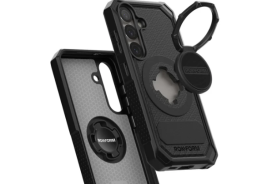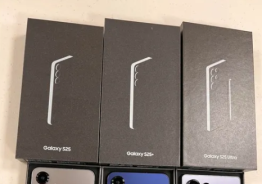With major smartphone manufacturers like Samsung, Sony, LG, HTC, and Huawei, to name a few, taking the larger display route, it seems 'bigger is better' is the mantra for 2013.
Recently, Huawei's gargantuan 6.1-inch Ascend Mate phablet was spotted prior to its anticipated launch at the CES 2013, courtesy the company's Chairman of Devices Richard Yu.
Additionally, a little-known Indian company, Byond Tech, has suddenly come under the spotlight as it launched the world's first-ever 6-inch smartphone called the Phablet PIII. Huawei was pipped to the post by the Pune-based Byond Tech, which now has the distinction of creating a new segment.
If you thought a 6-inch or 6.1-inch phablet was enormous, hold on to your horses as Samsung is said to be working on the Galaxy Note 2's succesor, the Galaxy Note 3, which will supposedly sport a mammoth 6.3-inch display!
Considering users often complain that the 5.5-inch Galaxy Note 2 is not ideal for single-handed use, it makes one wonder how these 6-inch plus phablets would fare in the long term, especially when it comes to basic phone functions such as receiving and making calls.
We take a look at the three colossal phablets: the Phablet PIII, the Ascend Mate, and Galaxy Note 3.
Phablet PIII
The Phablet PIII sports a 6-inch FWVGA 5-point touch capacitive display (with 854 x 480 pixels resolution), making it the smallest of the three devices. The smartphone measures 45 x 55 x 4.2 mm and weighs 350gms (nearly double of the Galaxy Note 2).
Under the hood, the Phablet PIII packs in a not-so-powerful dual-core processor that is clocked at a mere 1GHz, which is quite disappointing for a device this size. The smartphone also packs in an 8-megapixel rear-facing camera and a 1.3-megapixel front-facing snapper. It comes with Android 4.0 ICS out of the box.
A 2,500mAh battery that offers three hours of talk time and 120 hours of standby time powers the Wi-Fi and 3G-enabled phablet. The Phablet PIII also has a microSD card (supports expandable memory of up to 32GB); however, the internal memory and RAM details of the device are currently unknown.
The Phablet PIII is only available in India in white, gray, and orange and costs $274. The phablets USP, apart from its screen size, is the fact that it is dual-SIM.
Ascend Mate
Huawei's much-rumored Ascend Mate has been hitting the headlines frequently as its purported launch draws nearer. The device is said to feature a 6.1-inch Full HD display (1920 x 1080 pixels resolution). The Ascend Mate is said to have a pixel density of 316ppi, which is reasonable but pales when compared to the 440ppi of the HTC Droid DNA that has a 5-inch display.
The smartphone is said to be 0.39 inches or 9.9mm thick, which makes it thicker than the Phablet PIII and slightly thicker than the Galaxy Note 2. However, the thickness can be attributed to the massive 4000mAh battery the Ascend Mate is believed to pack inside. The smartphone is speculated to have a powerful quad-core 1.8GHz processor, 2GB of RAM, a 13-megapixel rear-facing camera, and will likely come pre-loaded with Android 4.1 Jelly Bean.
Galaxy Note 3
Rumor has it that the Galaxy Note 3 phablet will feature a massive 6.3-inch OLED screen. It is also speculated that the device will feature Samsung's new flexible display which is "foldable, rollable, wearable, and more."
Rumors also suggest that the Galaxy Note 3 will have an 8-core big.LITTLE ARM processor, which combines two quad-core processors - a 1.8GHz ARM Cortex-A15 designed and a 1.2GHz Cortex-A7.
Given the trend set by its predecessors, the Galaxy Note 3 will also come with an S Pen stylus, which is its USP and something that is not available on the other two devices.
Presently, apart from these details not much information regarding the Galaxy Note 3 has emerged, but with the year just beginning, it's a matter of time before the rumor mill churns up more...well...rumors.
© Copyright 2025 Mobile & Apps, All rights reserved. Do not reproduce without permission.

















